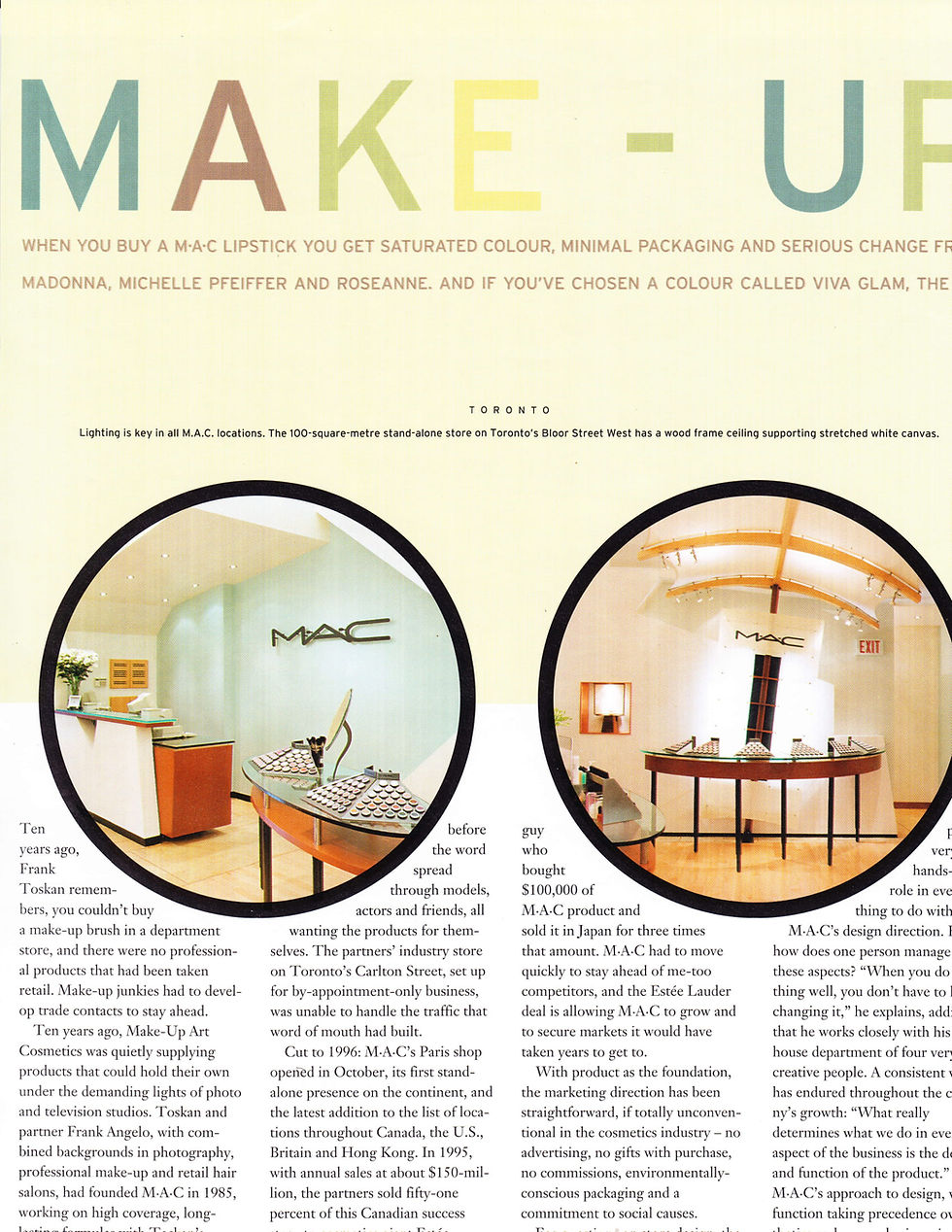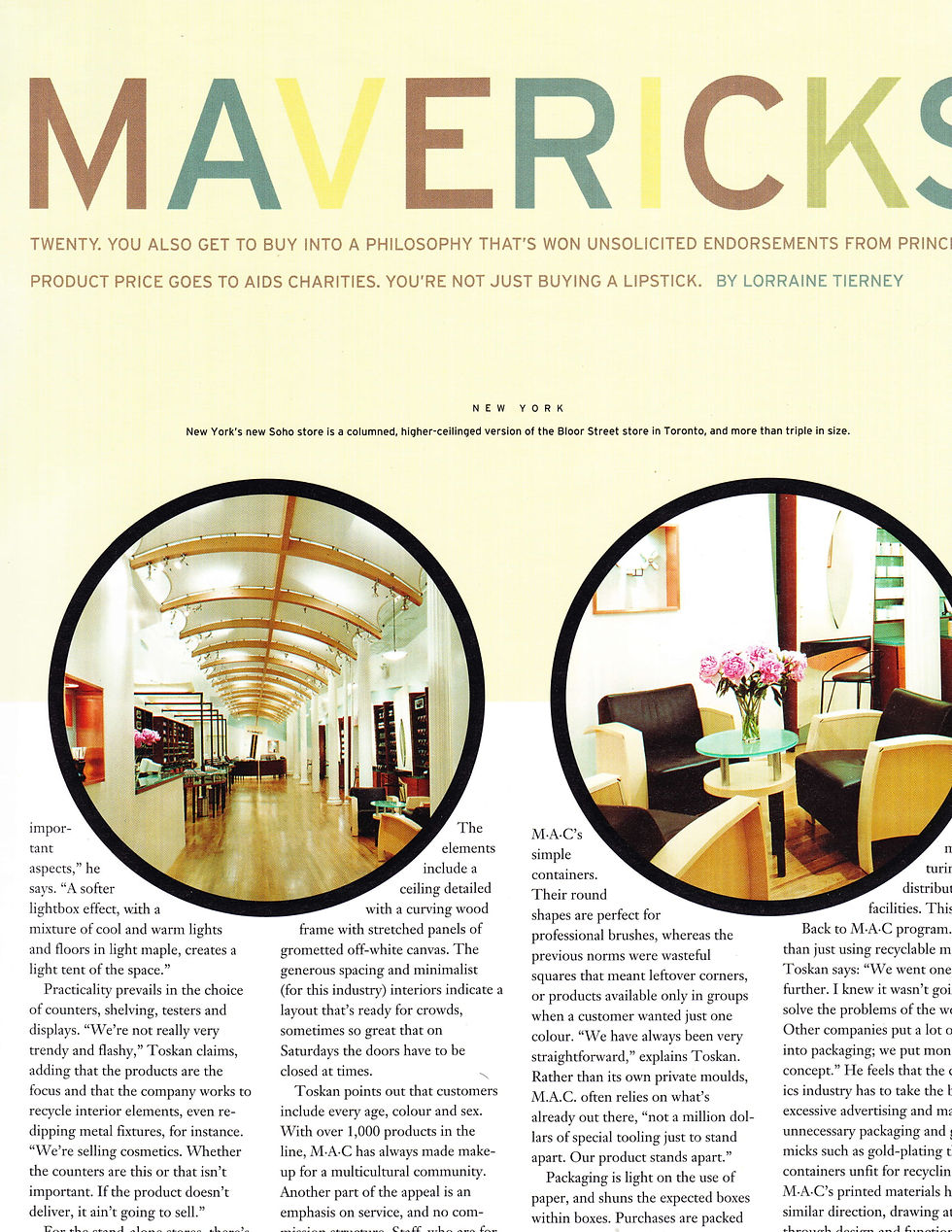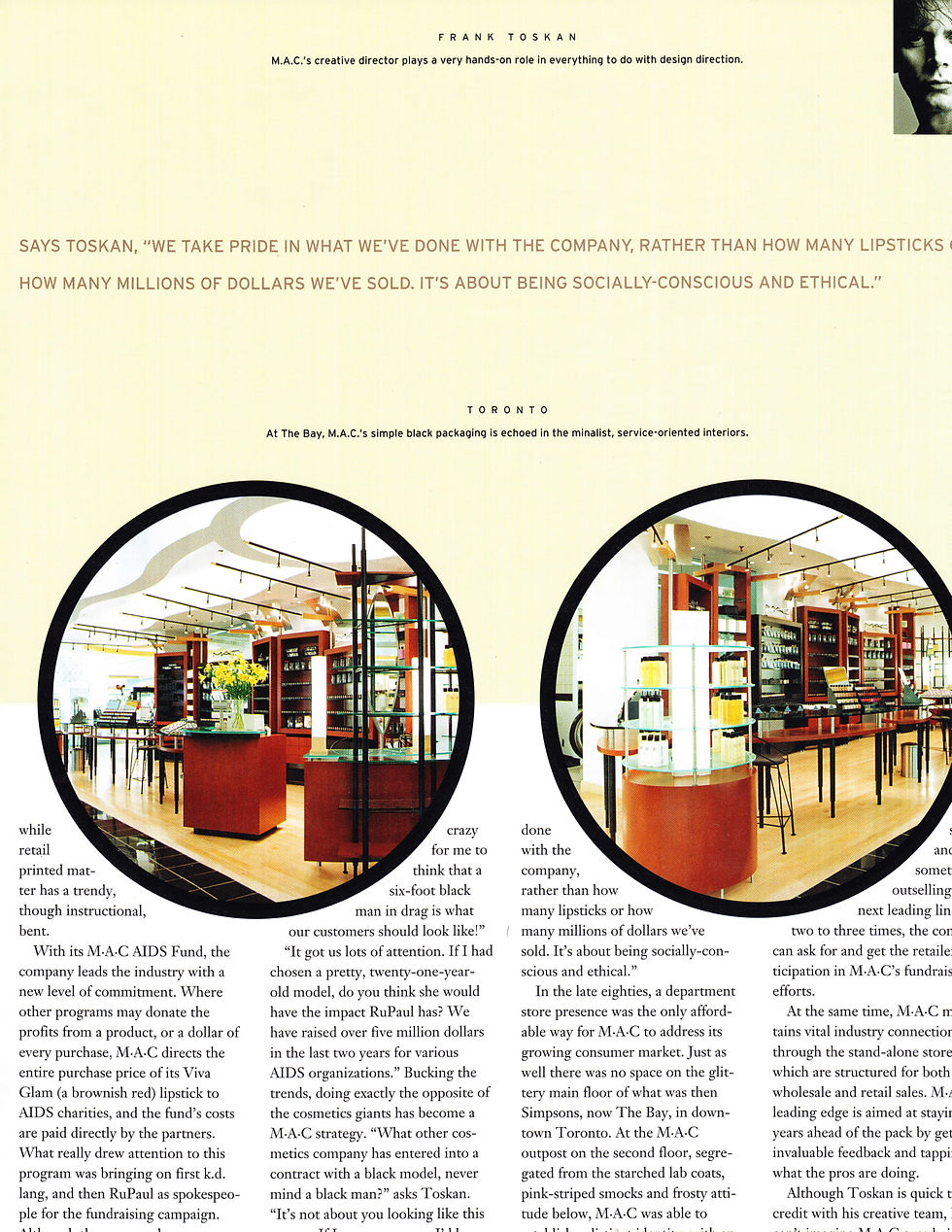Down to Erte
In the New York apartment of a concert pianist who loves to entertain, Toronto’s Rafaell Cabrera created a glamorous, Art Deco-inspired setting fit for Ziegfeld, Oscar Wilde and Erte.
By David Lasker
Photography by Ambrose Cucinotta
The bedroom walls are upholstered in diamond-patterned, trapuntostitched, raspberry silk.
The four-inch channel stitching evokes the scale of the faux bamboo-forest entrance hall and adds a
voluptuous quality to the room. On the bed, a cigarette bolster takes the place of pillows. The demilune
headboard is upholstered in a sunburst pattern that alternates copper-coloured patent leather (like that on the chaise longue) and black glass. Hand-painted gazelles, a frequent Art Deco graphic image, cavort on the leather “rays.” The proscenium arch at Radio City Music Hall inspired the double-tiered sunburst over the bed. A French, BeauxArts-style gunmetal statuette holding flowers stands next to a 1920s lamp and a 1940s mirror.
The exuberant Art Deco of Hemingway’s and Picasso’s Paris resounds in Toronto designer Rafaell
Cabrera’s makeover of a New York apartment. He cites Les années folles, the Crazy Years — France’s
answer to the Roaring Twenties. A generation of affluent young people drowned the horrors of the
First World War in an endless round of glorious hedonism that ended only with the Crash of ’29.
“It was a whimsical and worldly time when people claimed the right to live as they pleased,”
Cabrera says. “Moder-nism was changing fashions in furniture, fabrics and colours. The old conventions
were giving way to geometric, dynamic shapes. Artists created a new way of seeing.”
Thus inspired, Cabrera created, he says, “a theatrical and glamorous surrounding” for a concert
pianist who loves to entertain. “We wanted to create an atmosphere where Ziegfeld, Oscar Wilde and Erte could meet and have tea or a couple of drinks. They loved opulence.” The multi-talented Erte, who died in 1990 at the age of 97, dressed actress Sarah Bernhardt and the spy Mata Hari; his work inspired
Disney’s animated film Alladin. Cabrera met Erte, and like the aristocratic Russian, Cabrera boasts
several talents.
As a hair-and-makeup artist for Miramax Films at the Toronto International Film Festival for the past 15 years, Cabrera has helped beautify Hollywood stars Faye Dunaway, Ellen Burstyn and Life is Beautiful director Roberto Benigni.
Then there’s his theatrical streak. Cabrera has produced and directed events such as the Miss
Black Alberta Beauty Pageant; Canada’s Fashion Aid From the Hand to the Spirit, a benefit for African
famine victims; and the MAC Cosmetics show at the Festival of Canadian Fashion.
2/23/2012
On the walls, ebonized At the 1987 Festival, he worked with the bamboo frames hold Desrosiers Dance Theatre; dancers were covered Deco-era prints by Erte. head to toe in makeup. Globe and Mail fashion
The train of a period gown reporter David Livingstone pronounced the event “the motivated the rouched most stimulating and welcome evidence of culture window treatment. beyond fashion …at the Festival.”
The MAC connection runs deep. From 1984 to 1997, Cabrera was MAC’s director of visual planning, store design and construction, overseeing some 80 stores around the world. He introduced a new
look that was much admired and widely copied, he recalls. “It was innovative, in 1986, to make all the cosmetics displayers out of metal. No one had done it. Now it’s normal.
The apartment’s décor derives from the nine-by12-foot, geometric-patterned carpet on the ebonized-oak floor. The carpet, a client family heirloom, was made for the 1925 Paris Exposition of Arts Decoratifs. Its
persimmon, blue, grey, purple and black tones generated Cabrera’s colour scheme. The silk walls are padded with foam and felt to reduce noise transmission. The faux-bamboo ceiling bulkhead is made of foam-padded Sonotubes covered with felt and silk. The white brass and satinwood mirror saw duty
on board the 1905 Cunard ocean liner Caronia; the sunburst in front of the fireplace mirror is made of
feather-pattern crystals from a chandelier that graced the French Deco
“We were copied en masse. I saw direct ripoffs of my design. One boutique looked exactly like a
MAC store. They even tried to emulate our rotary finish. We constructed a special machine to create
that look, a three-dimensional, serpentine pattern. But they tried to do it by hand and it was uneven. It
was a mess.” The MAC connection began with a chance meeting at a Festival with MAC co-founder Frank Toskan. It led to Cabrera’s designing MAC’s booth in 1986 or 87 (Cabrera isn’t sure), winning the best-booth award.
Torontonians of a certain vintage will fondly remember the Cabrera-designed Le Connaisseur
Restaurant and Rooney’s nightclub, owned by car-parts magnate Frank Stronach. (They closed in
1988). For the Bay, Simpsons and Eatons, he designed specialty boutiques for home and fashion.
(He also produced and directed special events for Christmas and fashion shows.)
Now working solo, Cabrera has offices in Toronto, New York and Miami and a Web site at
www.rafaellcabrera.com. Recent Miami work includes Rainbows, a restaurant in the Red Road
airport district; and the video-recording studio Mark 3 Productions. New York-area projects of late include
the public areas of the condominium at 246 West End Ave., and the home of the vice-president of Toys
‘R’ Us in Ridgewood, N.J.
Born in Port-of-Spain, Trinidad, Cabrera moved with his family to Toronto in the 1960s. He
graduated from the interior-design program at the University of Manitoba in 1974. Five years later, in
New York, he met Dennis Abbé, who would become friend, mentor and business partner until his death
last year.
Abbé, founder of the New York Art Deco Society, worked in a Deco style across the continent.
He made a bas-relief for Hugh Hefner’s Los Angeles supper club, Torch. In New York, design star Sarah
Tomerlin Lee commissioned his murals and a frieze of golf carts and tennis rackets for the Doral Park
Avenue Hotel. For Michael de Santis’s 1990 Kips
2/23/2012


